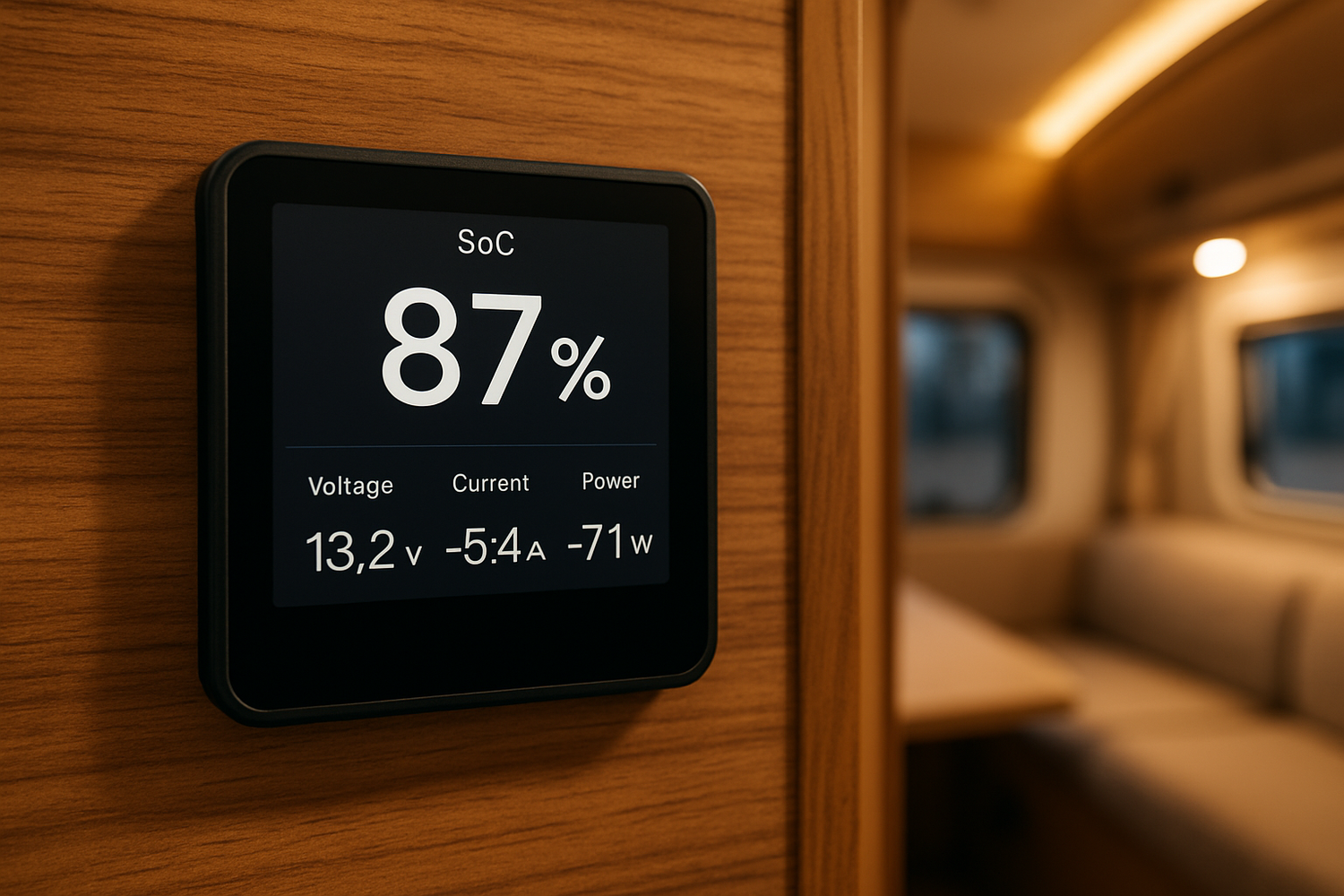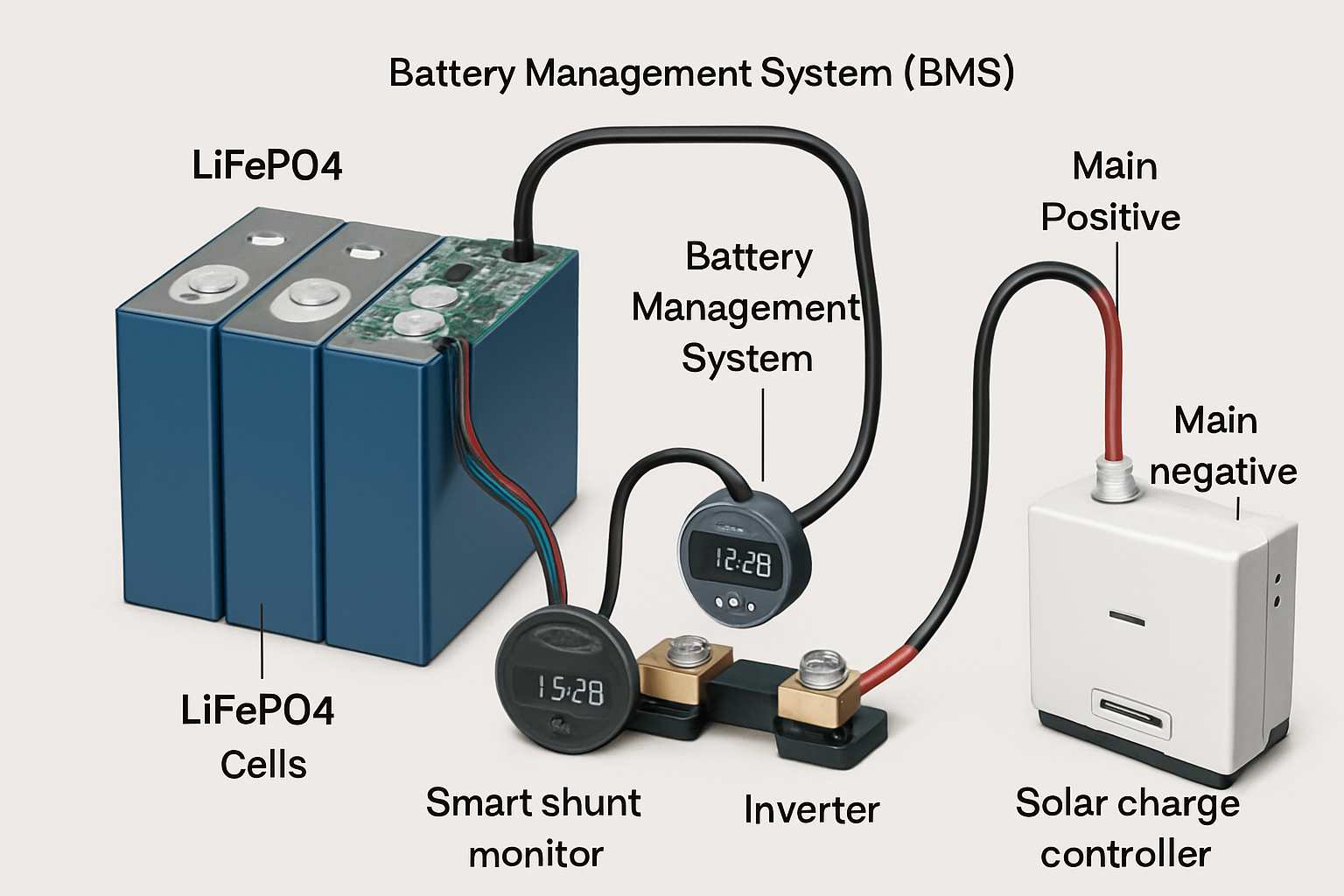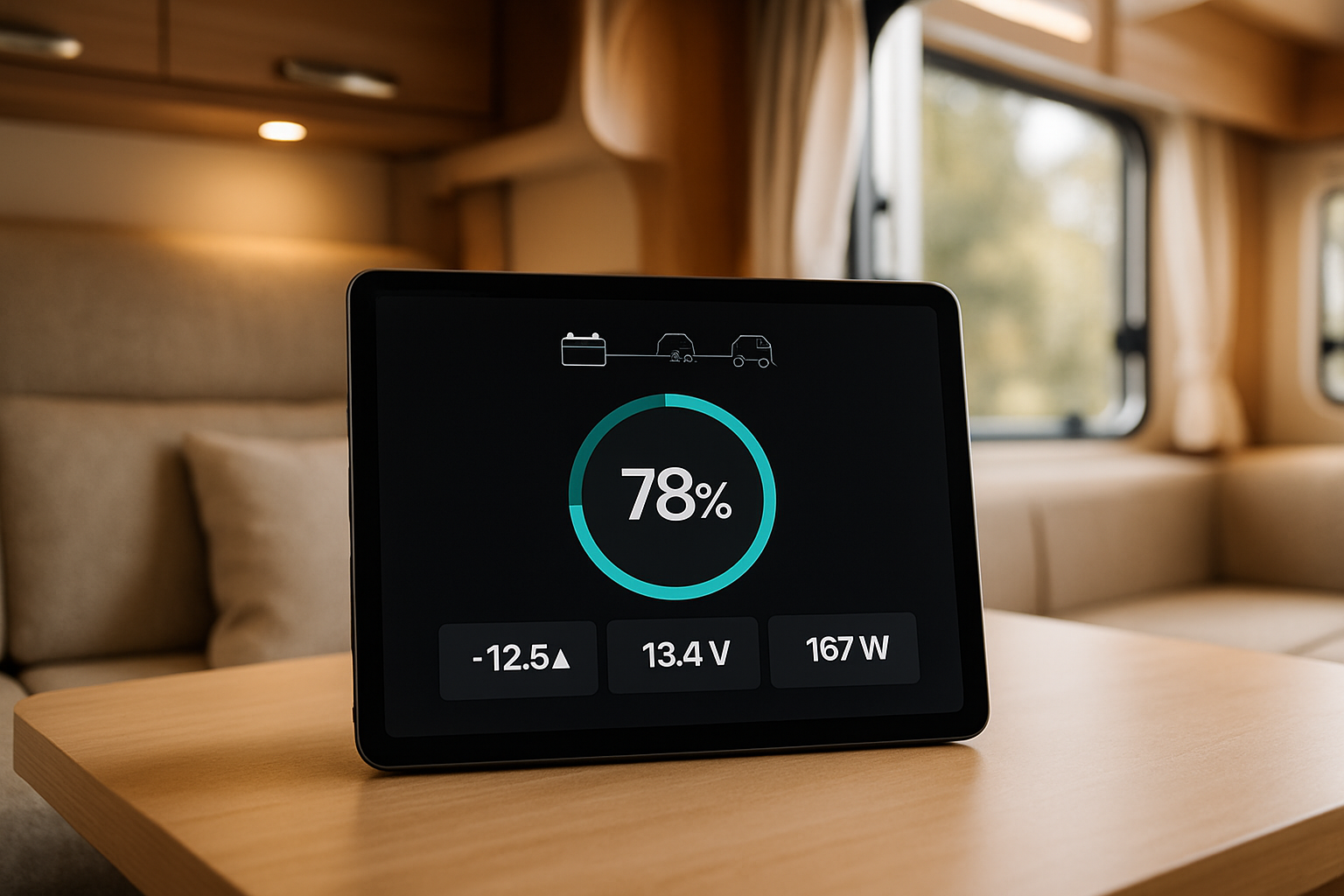An RV solar energy storage system is the heart of your off-grid freedom. It quietly works in the background, capturing sunlight and converting it into reliable power for all your adventures. Building a robust system involves more than just mounting panels on your roof; it requires understanding how batteries, controllers, and monitors work together. This guide provides the essential knowledge for creating and managing an efficient RV power system.
Core Components of Your RV Solar Storage System
A truly effective RV solar setup is a balanced ecosystem of components. Each part plays a distinct role in safely converting solar energy into usable power. Selecting high-quality, compatible components is the first step toward energy independence on the road.
Selecting the Right Deep Cycle Battery
The battery is the cornerstone of your energy storage. While lead-acid batteries were once common, Lithium Iron Phosphate (LiFePO4) batteries are now the superior choice for RV applications. A 100Ah lithium-ion battery, for example, offers a significantly longer lifespan, often lasting over a decade with thousands of charge cycles. They are also much lighter and can be discharged more deeply without damage, giving you more usable energy from the same capacity. This high performance and reliability make a lithium phosphate battery a sound investment for serious RVers.
The Role of the Solar Charge Controller
A solar charge controller acts as the gatekeeper between your solar panels and your battery bank. Its primary job is to regulate the voltage and current, preventing overcharging and extending battery life. There are two main types: PWM and MPPT. Maximum Power Point Tracking (MPPT) controllers are more advanced and efficient, capable of converting excess voltage into extra amperage. This technology can boost your charging efficiency by up to 30%, especially in cooler weather or when battery voltage is low.
The Inverter: Converting DC to AC Power
Your RV batteries store power as Direct Current (DC), but most of your household appliances run on Alternating Current (AC). A solar inverter bridges this gap. For sensitive electronics like laptops and microwaves, a pure sine wave inverter is necessary. It produces clean, stable power that is identical to what you get from the grid, ensuring your devices run correctly and without risk of damage.
Sizing Your System for Optimal Performance
A common mistake is guessing your power needs. Properly sizing your system prevents you from running out of power unexpectedly or overspending on unnecessary capacity. A thoughtful calculation is key to building a system that perfectly matches your lifestyle.
Calculating Your Daily Energy Consumption
Start by creating an energy audit. List every electrical device you plan to use, its power consumption in watts, and the estimated hours you'll use it per day. Multiplying watts by hours gives you watt-hours (Wh) per day for each device. Summing these up provides your total daily energy requirement. This data is the foundation for your entire system design.
| Appliance | Power (Watts) | Daily Use (Hours) | Daily Energy (Watt-hours) |
|---|---|---|---|
| LED Lights (x4) | 24 | 4 | 96 |
| Laptop | 60 | 3 | 180 |
| Refrigerator (DC) | 50 | 8 (cycle time) | 400 |
| Water Pump | 60 | 0.5 | 30 |
| Total | 706 Wh |
Matching Battery Capacity to Your Needs
Once you know your daily watt-hours, you can determine the right battery bank size. Convert your daily watt-hours to amp-hours (Ah) by dividing by the battery voltage (typically 12V). For 706 Wh, you would need about 59 Ah (706 / 12). To account for cloudy days and ensure longevity, it's wise to have at least two to three days of autonomy. For this example, a battery bank of 150-200 Ah, such as a 12V 200Ah lithium battery, would provide a reliable power reserve.
The Critical Role of Battery Monitoring
You cannot manage what you do not measure. An effective battery monitoring system is the dashboard for your RV's power. It provides the real-time data needed to make informed decisions about your energy usage and ensure the health of your investment.
Why Voltage Alone Is Not Enough
With traditional lead-acid batteries, voltage provides a reasonably good estimate of the state of charge. This is not true for LiFePO4 batteries. A lithium iron phosphate battery 12V maintains a very flat voltage curve, meaning it will read close to full voltage until it is nearly empty. Relying on voltage alone for a 12V 100Ah LiFePO4 lithium battery can leave you suddenly without power. True RV power management requires a more sophisticated approach.
The Power of a Shunt-Based Battery Monitor
The most accurate way to monitor RV batteries is with a shunt-based system. A shunt is a device installed on the negative battery cable that precisely measures every amp going in and out of your battery. It acts like a fuel gauge, providing an accurate State of Charge (SoC) percentage. It also shows real-time current flow, so you can see exactly how much power your solar panels are producing and how much your appliances are consuming. This level of insight is crucial for managing your energy budget effectively.
Integrating with a Battery Management System (BMS)
Every quality lithium battery pack includes an internal Battery Management System (BMS). The BMS is a safety circuit that protects the cells from over-voltage, under-voltage, extreme temperatures, and short circuits. While the BMS works to protect the battery, the external shunt monitor provides you with the data. The two systems work in tandem: the BMS ensures safety, and the monitor provides the intelligence for efficient power management.
Maximizing System Lifespan and Efficiency
A well-designed solar energy storage system should provide reliable power for many years. Following best practices for charging and usage will protect your components and maximize your return on investment. The ongoing transformation of the power sector continues to introduce innovations, and proper system management helps you take full advantage of them. As noted in the Electricity Storage Valuation Framework by IRENA, electricity storage is a key solution for leveraging renewable energy effectively.
Proper Solar Battery Charging Practices
Using the correct charging profile is essential for the health of your lithium battery storage. Your solar charge controller, inverter-charger, and any other charging sources should be specifically set for LiFePO4 chemistry. This ensures the battery receives the correct voltage and that the charging stages are optimized for speed and longevity. Efficient system design, such as using DC-coupling to minimize power conversion losses, further enhances performance. According to the U.S. Department of Energy, DC coupling allows power to flow directly from panels to the battery, requiring only one inverter and improving efficiency. This principle is highlighted in their analysis of power optimization technologies.
Understanding Depth of Discharge (DoD) and Cycle Life
Cycle life refers to the number of times a battery can be charged and discharged before its capacity degrades significantly. LiFePO4 batteries boast a high cycle life, often exceeding 3,000 cycles. While you can safely use up to 100% of their capacity, consistently discharging them to a shallower level (e.g., 80% DoD) can extend their lifespan even further. The relationship between DoD, temperature, and charge rates is complex, but understanding the basics helps you make smarter usage decisions. For an in-depth analysis of these factors, the Ultimate Reference for Solar Storage Performance offers detailed data on how operational variables affect long-term battery health.
Your Path to Energy Independence
Building an RV solar energy storage system is an empowering step toward true freedom on the road. By choosing the right components, sizing the system to your needs, and implementing an accurate battery monitoring system, you gain control over your power supply. This allows you to travel further and stay off-grid longer with confidence and peace of mind. The rapid expansion of renewable technologies, as detailed in the IEA's Net Zero by 2050 report, is making these energy storage solutions more accessible and powerful than ever, putting energy independence within reach for everyone.
Frequently Asked Questions
How long will a lithium battery last in an RV?
A high-quality LiFePO4 deep cycle battery can last for 3,000 to 5,000 charge cycles. For the average RVer, this translates to well over 10 years of reliable service, making it a long-term investment.
Can I mix different types or ages of batteries?
It is strongly advised not to mix batteries of different types, capacities, or ages in the same battery bank. Mismatched batteries will charge and discharge at different rates, leading to imbalances that reduce the overall performance and lifespan of the entire system.
What is the most important component of an RV solar energy storage system?
While every component is vital for a functioning system, the battery is the core of your energy storage. However, its performance and longevity are directly dependent on the quality of the solar charge controller and the accuracy of the battery monitoring system. A great battery can be quickly compromised by poor charging or a lack of monitoring.





Leave a comment
All comments are moderated before being published.
This site is protected by hCaptcha and the hCaptcha Privacy Policy and Terms of Service apply.